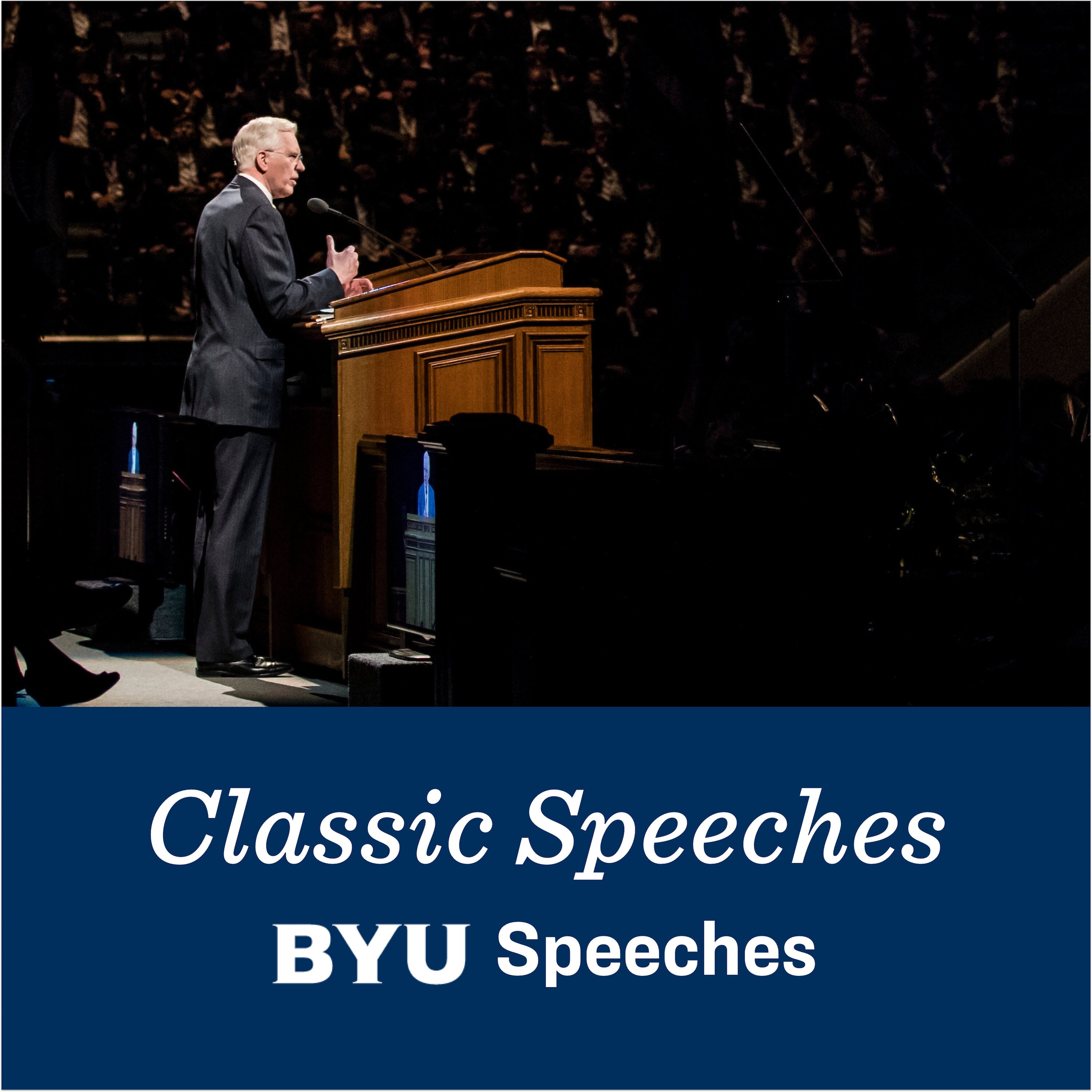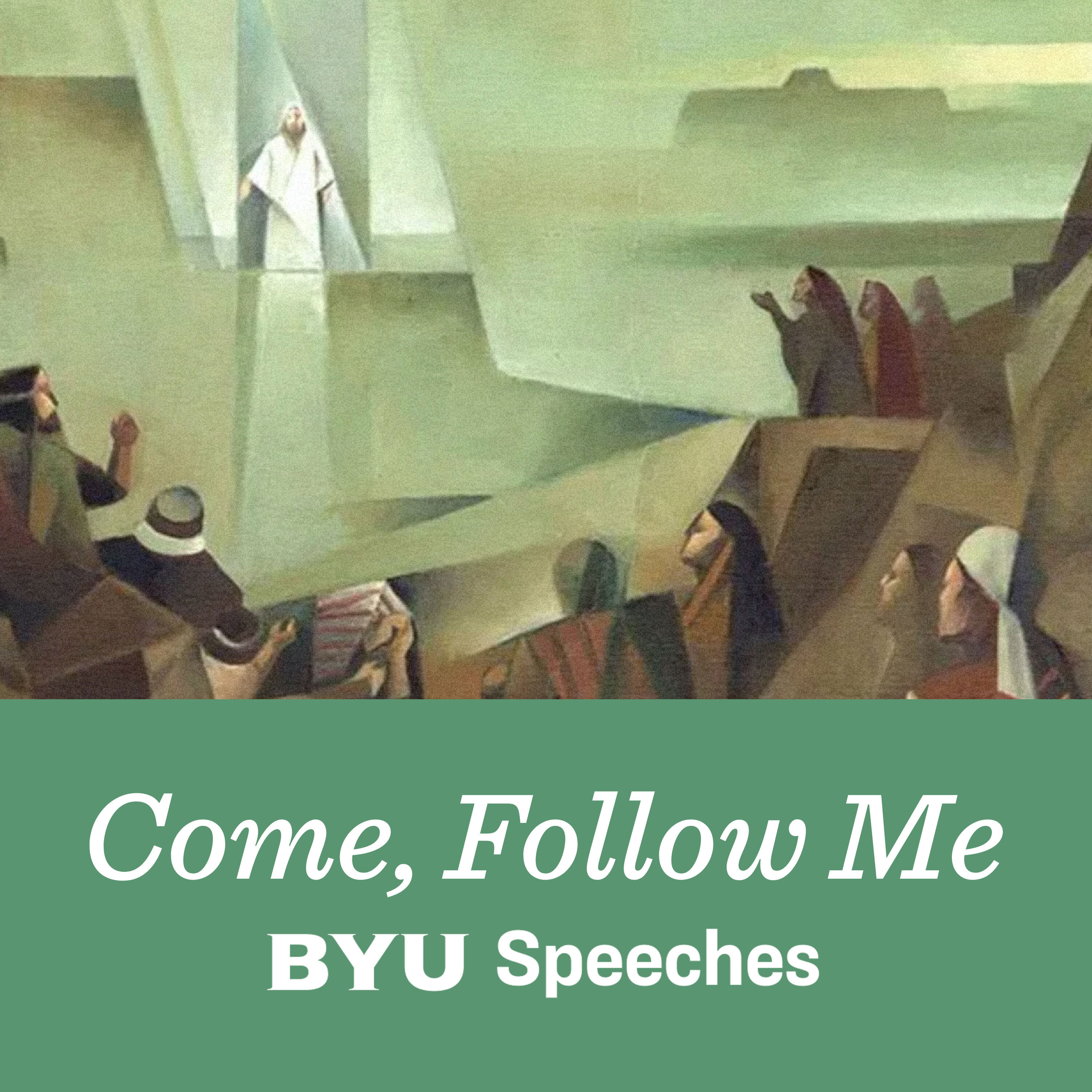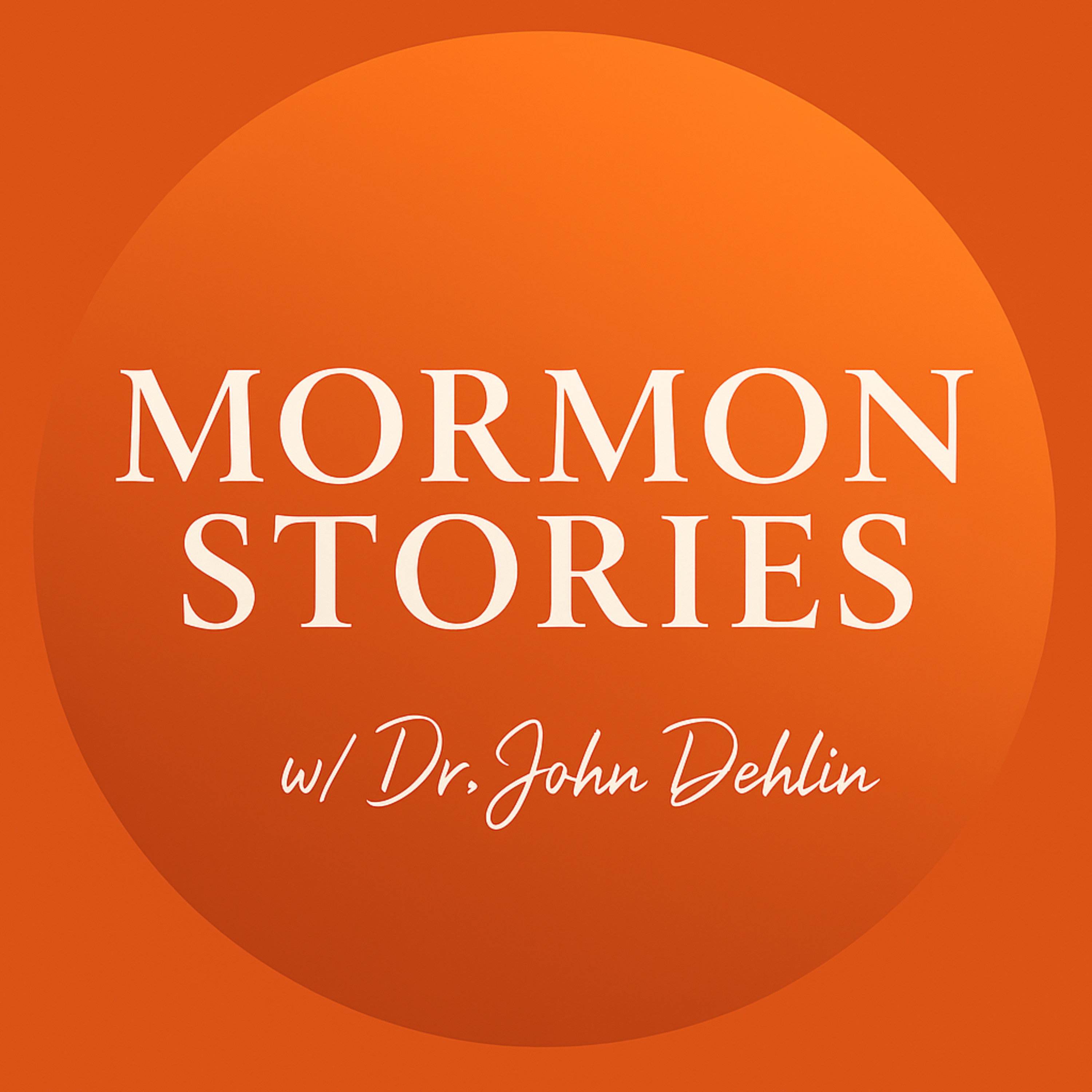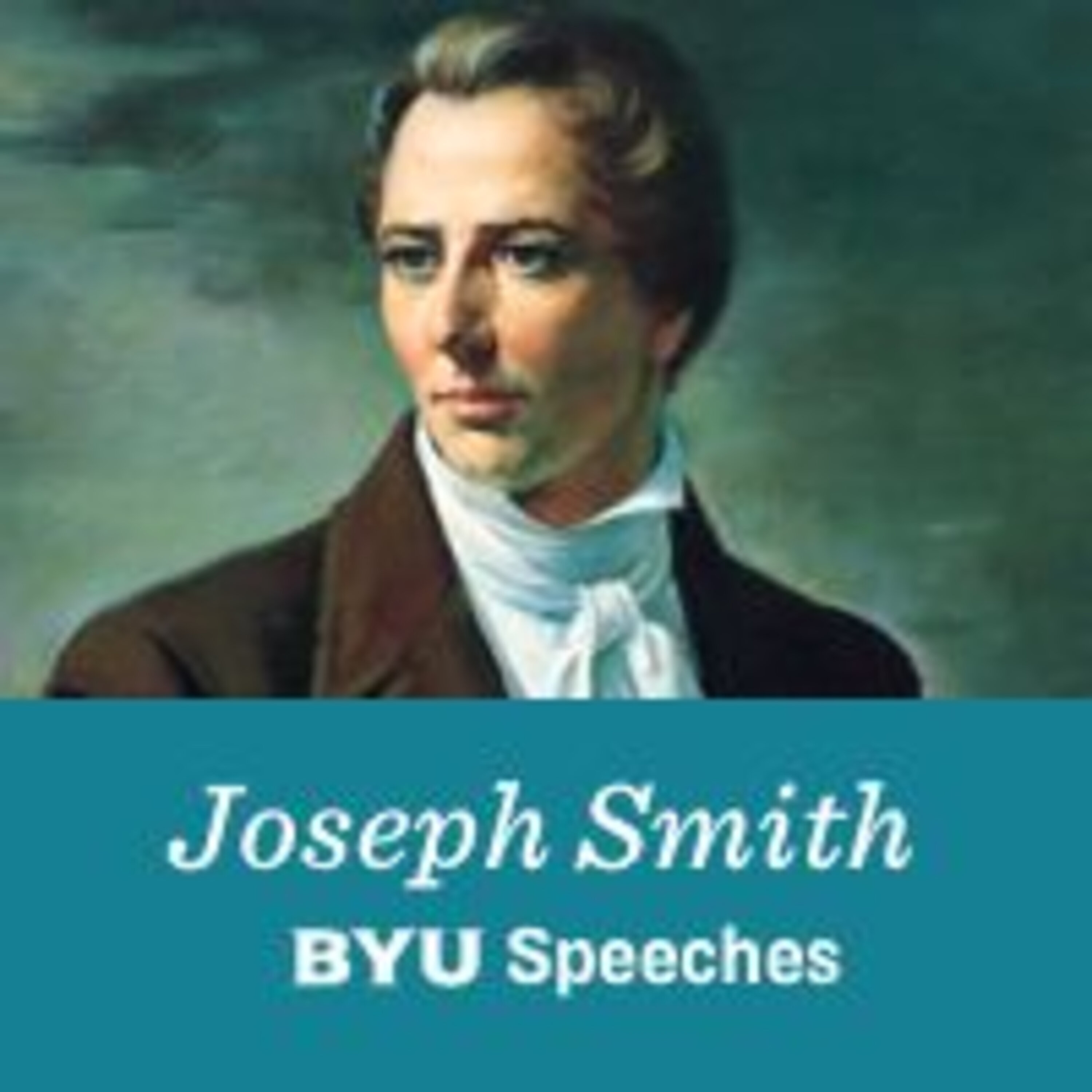.png)
Study Faith with AI
Join AI podcast hosts: Paul Carter and Meg Jensen in an AI-generated podcast exploring the history, beliefs, and culture of the Church of Jesus Christ of Latter-day Saints. We balance facts and faith as you search for truth.
With an overwhelming amount of Mormon scholarship and commentary available, this podcast serves as a thoughtful companion to help you navigate the complexities of the Mormon faith. Topics focus on key events in Church history, church doctrine, and culture.
Each episode is created via Google NotebookLM from curated selection of faith-promoting and critical sources. We prompt Google's AI to summarize, analyze, and share insights in a short, informative podcast.
Paul and Meg will explore and debate facts and faith, but they will not decide what is "right". Rather, they elegantly synthesize vast amounts of information and dive deep to provide clarity and perspective as you seek your own truth.
Tune in to explore faith through a modern, innovative lens.
Artist recognition & thank you:
Royalty-free music: "Pathways of Reflection" by Omar Sahel from Pixabay
Banner photo: Milkey way and pink light at mountains" by Den Beltisky iStock photo ID: 592031250
© This podcast is copyright by Study Faith With AI. 2025. All rights reserved.
Study Faith with AI
S11 E1 Prologue: Apostates | Brother Buzz Finds Lost Sheep
In this prologue to Season 11: Apostates, Brother Buzz explores the concept of apostasy through the lens of "material non-disclosure" - examining what happens when crucial information is withheld before making sacred covenants. He discusses prominent figures who left the early Church, including Book of Mormon Witnesses and Apostles, questioning whether their departures reveal important truths about faith and institutional transparency.
Brother Buzz focuses on understanding those lost sheep, rather than dismissing them.
Study with our Free AI Notebooks
1. Truth | 2. Beginnings | 3. First Vision | 4. Priesthood | 5. The Gold Plates | 6. The BoM | 7. The BoA | 8. Polygamy | 9. Changes | 10. Challenges | ...
The water in the baptismal font ripples as my eight-year-old son steps down the stairs, beaming with excitement. His white clothing seems to glow, and I can see my own childhood reflection in his eyes. As his father, I'm about to baptize him into what we believe is God's one true church on Earth. It should be one of the proudest moments of my life.
But beneath my smile, questions churn like the disturbed water. In his eyes, I see pure faith - the kind that moves mountains and parts seas. In my heart, I feel the weight of generations of belief, and the crushing responsibility of either preserving or disrupting that legacy.
I'm Brother Buzz, and this is "Study Faith With AI".
"Now, have you paid yet?" The CEO's voice crackled through my phone with an unexpected urgency.
"No, not yet," I replied, confused by the strange question.
"Good. Don't pay anything," she continued. "My lawyer will send you new account information. And when the other CEO calls—which he will—don't listen to him. He's being forced out. Just pay to the new account."
As I hung up the phone, a sickening realization washed over me. The franchise I had spent months researching and had just signed a ten-year contract with was imploding from within. Two CEOs were locked in litigation, each trying to seize control of the company, each claiming the other was corrupt.
I called my uncle, a business attorney, in a panic. "Can I get out of this contract? I've signed, but haven't paid."
"That's material non-disclosure," he said without hesitation. "Information that any rational decision-maker would want to know before entering an agreement. Of course you can get out."
Material non-disclosure. I filed the phrase away in my mind, not realizing it would resurface years later with profound implications beyond business contracts. It wasn't until I began seriously questioning my faith that I recognized its application to the sacred covenants I'd made throughout my life in the Church.
At eight years old, I stood in white clothing before my ward, my father performing my baptism. At nineteen, I knelt at a temple altar making solemn promises with eternal consequences. Yet for all those covenants — what some might call spiritual contracts — what hadn't been disclosed to me?
The Church's carefully curated narrative creates a perfect environment for these commitments. Young people progress through Primary singing songs about temples, and then through youth programs where missions and temple marriage are presented as the only righteous path forward. The endowment ceremony itself is strategically scheduled right before a mission departure or a wedding day — moments when backing out would create maximum social disruption.
Who walks away from the temple days before their wedding? Who refuses baptism when everyone they love beams with pride at their "choice"? The formula is potent: institutional non-disclosure, overwhelming social pressure, and strategic timing of covenants when refusal feels impossible.
Even in Mormon theology, this pattern contradicts a fundamental principle. Before Adam and Eve could exercise agency in the Garden of Eden, they needed knowledge—they had to eat from the Tree of Knowledge of Good and Evil. Knowledge always precedes true agency. Without it, what appears to be choice is actually compulsion or manipulation.
When crucial information is willfully withheld—particularly information that challenges foundational narratives—genuine choice becomes impossible. Informed consent requires being informed. Agency requires knowledge first.
As I reflected on my own experience, I realized how the Church brilliantly simplifies the path of covenants. "Do you love Jesus? Then follow the prophet." "Do you believe the Book of Mormon is true? Then Joseph Smith must have been a prophet." The messaging is masterfully direct, focusing on emotional connections rather than historical complexities.
When questions arise—and they inevitably do—the counsel is always the same: Focus on the core essentials. Put the complicated stuff on a shelf. Don't let yourself be distracted by "anti-Mormon literature" or "faith-diminishing sources." And above all, "stay in the boat" no matter how turbulent the waters become.
But as my questions multiplied and that metaphorical shelf began to crack under their weight, I found myself wondering about the purpose behind this approach. Perhaps "stay in the boat" wasn't spiritual guidance but an institutional survival strategy. Perhaps the focus on core truths wasn’t just wise counsel, but a necessity for a narrative that couldn't withstand scrutiny. The boat, I realized, was designed more to keep people in, keep people quiet, and keep people rowing towards a distant Celestial shore.
My journey creating Study Faith with AI has led me to think a lot lately about the nature of truth itself. Not just what's true, but how we even define and recognize truth in the first place.
In all my research about the Church, I've discovered there are different categories of truth that often operate simultaneously—scientific truth based on evidence and testing, historical truth pieced together from records and accounts, religious truth based on faith and revelation, metaphorical truth found in symbols and stories, and perhaps most powerful of all: experiential truth—the reality we know through lived experience.
I sometimes imagine a future conversation that haunts me. Years from now, my son standing before me as a grown man, perhaps about to serve a mission, marry in the temple, or with his own children, asking me the questions I know he’ll someday ask:
"Dad, what did you know? When did you know it? And what did you do about it?"
In that imagined moment, I see disappointment in his eyes. Not because I questioned, but because I might have remained silent while guiding him down a path I no longer trusted myself.
Every Sunday I spend researching Church history, every document I read that contradicts what I taught as a missionary, every piece of the puzzle that shifts my understanding of Joseph Smith and the Restoration—all of it is shaping the answers I'll someday give to those inevitable questions.
Will I tell him I knew the Church's narrative had significant gaps but said nothing? Or will I be able to say I had the courage to follow the truth wherever it led - whatever the cost.
Joseph Smith once said, "Truth is knowledge of things as they are, as they were, and as they are to come." But what happens when you discover that what you've been taught about "things as they were" doesn't align with historical reality?
It's not just about disappointing facts or challenging narratives. It's about realizing that the entire framework through which you've interpreted your life experiences might be built on a foundation you can no longer trust.
The entire framework can fail.
And then there’s the painful realization wasn't that I might have been wrong—it was understanding that generations of sincere believers, including my own ancestors who crossed the plains with handcarts, might have sacrificed everything for a beautiful myth rather than divine truth.
Yet here's where things get complicated. My feelings in the chapel as a child, singing primary songs with a heart full of belonging and purpose—that was real. The peaceI felt giving the Gift of the Holy Ghost to a paralyzed father as a missionary—that was real. The peace I felt reading the Alma 5 in the Book of Mormon—undeniably real.
These experiential truths exist alongside historical questions. But I've come to understand that past experiences, however meaningful, don't necessarily dictate our present or future path. The spiritual witness I felt at nineteen doesn't obligate me to ignore what I learn at forty. The testimony I bore with conviction a decade ago doesn't prevent me from embracing new understandings today. Life is constantly evolving as we learn and grow—and sometimes that growth leads us away from the very places where our deepest experiences once occurred. What was true for me in one season of life may not hold the same truth in another, not because the experience wasn't real, but because we never step into the same river twice—both the waters and the person stepping into them are ever-changing.
In the Church, we often speak of apostasy as a terrible sin. terms—portrayed as a grievous sin, more severe than theft or adultery. The term "apostate" carries immense weight, laden with judgment and consequences.
But what happens when faithful members turn their attention toward those who have departed? What insights might we gain by listening to their stories rather than dismissing them? Are sin and wickedness truly the root causes when our brothers and sisters leave? Or might there be reasoned and justifiable explanations for their separation?
Christ himself taught us to "leave the ninety and nine" and search for the one lost sheep. Perhaps this parable isn't solely about rescuing the wayward; perhaps it's also about what the shepherd discovers during his search. Their questions could illuminate our paths, and their experiences may reveal aspects of our shared history we've never fully confronted.
Consider this remarkable truth: All three witnesses to the Book of Mormon left the Church despite testifying of seeing an angel and golden plates. Eight of the original Twelve Apostles eventually severed ties. Every member of Joseph Smith's First Presidencies, except his brother Hyrum who died with him at Carthage, found themselves at odds with the institution they once led. Even Emma Smith—the "elect lady"—chose not to follow Brigham Young west.
These weren't casual members who drifted away. These were foundational figures—witnesses, apostles, counselors, and the prophet's wife herself. Their departures weren't trivial rebellions but profound ruptures that deserve examination.
This exploration goes beyond examining Joseph Smith’s leadership under a magnifying glass. It's about understanding what apostasy truly is—the profound human experience of separation from a community that once provided meaning, identity, and belonging. What brings people who once sacrificed deeply for their faith to eventually walk away or be forced out? Who goes quietly and who fights? Does excommunication even work?
In Season 11, we'll explore these compelling stories—from Oliver Cowdery and Emma Smith to John Dehlin and Nemo the Mormon. We'll dive deep into individuals and groups who fell away from the good graces of Church leadership, seeking to understand the forces that drove such painful separations.
So, whether you're fully committed to the Church, questioning its history, or already navigating life after Mormonism, these narratives offer insights into faith, doubt, and the courage to follow one's conscience, wherever it leads.
I'm Brother Buzz, and this is Season 11 of Study Faith With AI: Apostates.
If you find value in this exploration, please like, share, follow, and consider becoming a subscriber. Your contributions help keep these conversations going and allows us to maintain the highest quality production. You can find all the details at studyfaithwithai.com. Thank you for being part of this journey.
Podcasts we love
Check out these other fine podcasts recommended by us, not an algorithm.

Classic BYU Speeches
BYU Speeches
Come, Follow Me: BYU Speeches Podcast
BYU Speeches
Mormon Stories Podcast
Dr. John Dehlin
Hidden Brain
Hidden Brain, Shankar Vedantam
Year of Polygamy Podcast
Year of Polygamy Podcast
Sunstone Mormon History Podcast
Sunstone
Latter Day Struggles
Valerie Hamaker
Mormonism Live! – Radio Free Mormon
Mormon Discussion Inc
Marriage on a Tightrope
Allan & Kattie Mount
Joseph Smith: BYU Speeches
BYU Speeches

.png)
